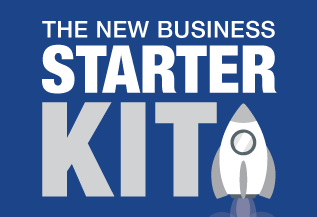Question 16 - How Do I Repay my HECS Debt?
What is HECS-HELP?
.png)
HECS-HELP has two components - it is both a loan and a student discount.
For example, if you are an eligible student, the Australian Government (through the HECS-HELP scheme) will pay your course fees for you.
The Australian government pays the amount of the loan directly to your education institution.
Loan repayments are then made through the Australian taxation system when your income reaches a certain threshold ($48,361 for the 2022-23 financial year). It is possible to make voluntary repayments at any time regardless of income.
A HECS-HELP debt is incurred immediately following the elected 'census' date for any University course you have nominated to receive HELP assistance for.
Am I eligible for HECS-HELP?
To qualify for HECS-HELP, you must:
- be studying in a Commonwealth supported place;
- be an Australian citizen; or
- be a New Zealand Special Category Visa holder who meets the long-term residency requirements; or
- be a permanent humanitarian visa holder;
- be enrolled in each unit at your university by the census date;
- meet the relevant HECS-HELP residency requirements; and
- submit a valid Request for Commonwealth support and HECS-HELP form by the census date (or earlier administrative date) to your university.
When do I need to start repaying my HECS-HELP loan?
Repaying you HECS-HELP debt commences once your Repayment Income (RI) is above the minimum repayment threshold for compulsory repayment. That is, once your taxable income reaches a certain level.
The RI thresholds are adjusted each year.
The minimum RI threshold to make a loan repayment for 2022-23 is $48,361. Where income exceeds this threshold, a compulsory repayment of at least 1% of your income is raised in your income tax assessment. The percentage increases as your income increases.
Rates for 2022-23 are as follows:
| Below $48,361 | Nil |
| $48,361 – $55,836 |
1.0% |
| $55,837 – $59,186 |
2.0% |
| $59,187 – $62,738 |
2.5% |
| $62,739 – $66,502 |
3.0% |
| $66,503 – $70,492 |
3.5% |
| $70,493 – $74,722 |
4.0% |
| $74,723 – $79,206 |
4.5% |
| $79,207 – $83,958 |
5.0% |
| $83,959 – $88,996 |
5.5% |
| $88,997 – $94,336 |
6.0% |
| $94,337 – $99,996 |
6.5% |
| $99,997 – $105,996 |
7.0% |
| $105,997 – $112,355 |
7.5% |
| $112,356 – $119,097 |
8.0% |
| $119,098 – $126,243 |
8.5% |
| $126,244 – $133,818 |
9.0% |
| $133,819 – $141,847 |
9.5% |
| $141,848 and above |
10% |
What is Repayment Income (RI)?
Your repayment income is different to your taxable income. It is calculated as:
- your taxable income for an income year, plus
- your total net investment losses, plus
- any total reportable fringe benefit amounts shown on your Income Statement; plus
- reportable super contributions; and
- any exempt foreign employment income from the current income year
How to check your HECS-HELP debt balance
There are two main ways to check your HECS-HELP debt balance:
- contact the ATO on 13 28 61, and provide them with your TFN. With this they are able to verify your personal details and tell you your HECS-HELP balance or
- view your HECS-HELP balance online via the myGov site. You will need to link your account to the ATO so they have all the details. From here, you view your balance online.
How to repay you HECS-HELP debt though the taxation system
Compulsory repayments
When commencing a new job make sure you indicate to your employer that you have a HELP debt. This is done by ticking a box on the TAX DECLARATION FORM you will complete before starting work.
Your employer will withhold additional tax from each pay to cover your estimated HECS-HELP debt liability based on your annual RI. The additional tax withheld by your employer should cover this repayment.
NOTE: Your employer only withholds the additional tax based on the income THEY pay to you. They won't take into account other income - from second or previous jobs or investment for instance - so you may have to make a top-up payment once you lodge your tax return.
Voluntary repayments
You are able to make voluntary repayments to your debt at any time to the ATO by BPAY and credit card.
Tax tips for repaying your HELP debt
Keeping receipts and claiming deductions for everything you're entitled to can reduce your RI and minimise your compulsory annual repayment amount. It is important to keep all work related receipts and to take advice on what you can claim in order to maximise your refund.
If you are working more than one job, each employer will only withhold additional tax to cover your HECS-HELP debt based on the income that
they pay you. If your combined income from multiple employers is over the minimum repayment threshold, you will still be liable to make a
repayment towards your HECS-HELP debt when you lodge your tax return.
OTHER QUESTIONS IN THIS SERIES:
- What Steps are Involved in Starting a Business?
- Do I Have to Register for GST?
- What Tax Records Do I Need to Keep for My Business?
- What Is a Business Activity Statement?
- What’s the Difference Between an ABN and an ACN?
- Do I have to include GST on my Invoices?
- What Software do You Recommend for My Start-Up Business?
- How Much Tax Do I Pay?
- Can I Claim my Motor Vehicle Expenses?
- What Do I Need to Do When I Employ My First employee?
- What's The Most Appropriate Tax Structure For My Business?
- How Much Do You Charge?
- How Do I Change Accountants?














